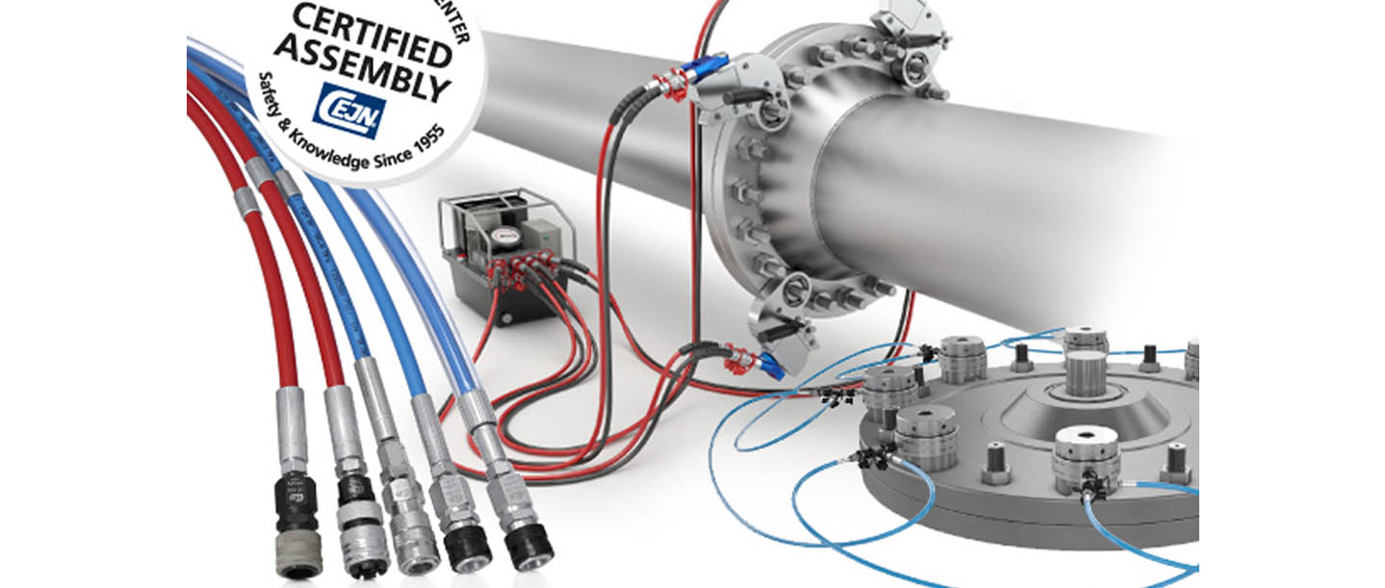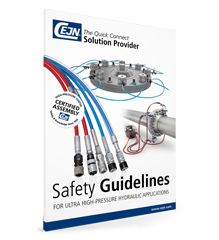Safety Guidelines for Working with Ultra High-Pressure Hydraulics

At CEJN, we have more than 40 years of experience in the ultra high-pressure hydraulic business and safety is one of our top priorities. Therefore it was natural for us, considering our knowledge, to produce a Safety Guideline manual to create awareness about this powerful media and to help people work as safely as possible.
Working with extreme hydraulic pressures is a serious task. Sometimes work has to be done in very confined spaces and involves heavy machine parts that need to be dismantled for repair. Other times the environment might be a challenge due to remote areas as mountain tops or out at sea where conditions are tough, like in wind power turbine installations.
Over the years this has led to a demand for smaller and lighter tools in order to simplify the tasks. Smaller tools need higher pressure to generate the power required to perform the heavy task of loosening or tightening bolts. Extreme pressure demands a high level of safety as a leak or accidental disconnection could cause serious personal injury or damage to machinery. This is especially important at a time when copies of couplings and hoses are circulating on the market.


Learn how to work safely with Ultra High-Pressure Hydraulics. Download our Safety Guidelines!